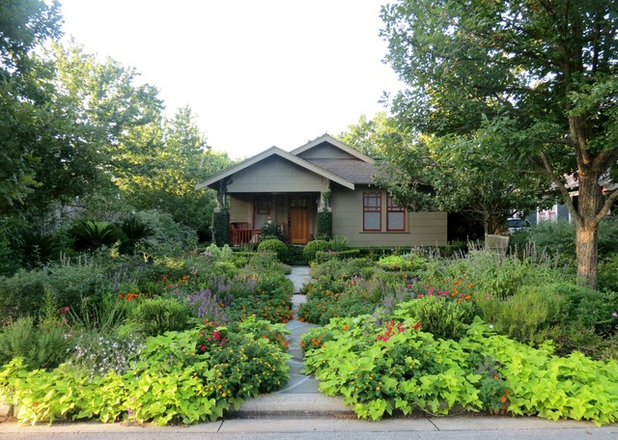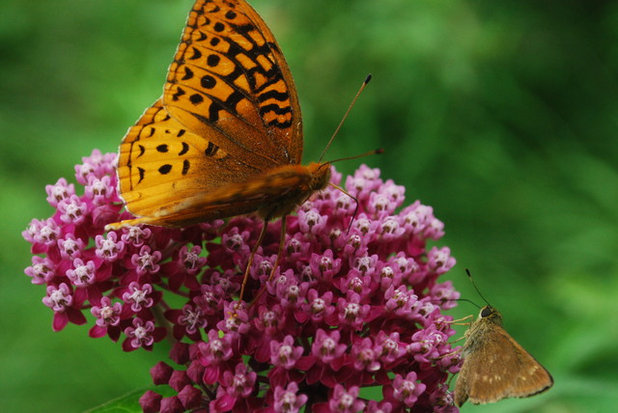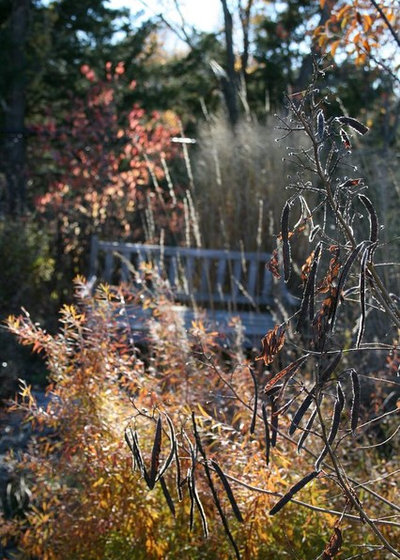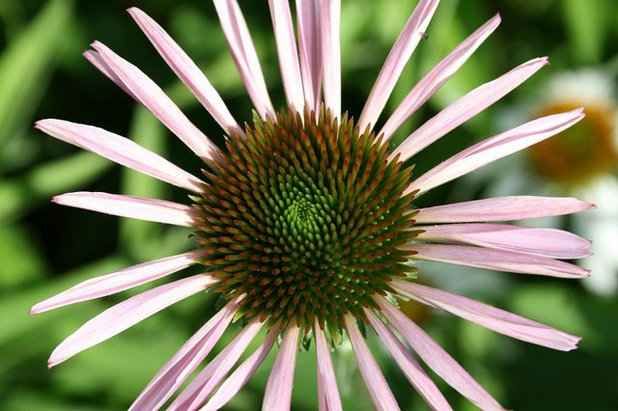We always seem to strive for reliable consistency in our gardens and in our lives; it’s reassuring to live by a clock or know when and where a flower will bloom. But life doesn’t work that way, and gardens certainly don’t either. The more we try to push against the wildness inherent in plants and animals, the more we lose a bit of ourselves, and maybe the peace, connection and stability we have as a part of nature. More and more I’m embracing the idea that gardens will never cease to teach us how to live and how to forgive ourselves and one another. Here are ways in which I see gardening evolving in the first chunk of the 21st century.

David Morello Garden Enterprises, Inc.
Gardens as a community space for human and animal. There are several traditional ways we experience gardens, mainly due to the way they are designed. These designs are handed down to us — and of course have evolved — from unique cultural concepts around the world: Japanese and Zen gardens that tend to shrink down the vistas beyond to smaller spaces, cloistered monastic gardens safe from the rest of the world, or Persian gardens full of lushness and cool respite. Though these are just a few broad examples, the message is clear: Traditional gardens are mainly personal spaces.
As interest grows in pollinators, wildlife habitat, food forests and vegetable spaces, suddenly even the most private gardens are opening up to the wider world. As front yards are transformed, suburban and urban homes welcome passers-by into a new experience that doesn’t hold folks at arm’s-length, as large, formal lawns tend to do. Plants come right up to the sidewalk, as in this front yard in Houston, where nature tickles our senses and legs.

Gardeners are embracing wildlife from all angles, above and below the soil line, and the purpose and function of our planted spaces are transforming into a community for humans and other species to more freely interact with and benefit from one another. And as urban farms pop up, they welcome the sharing of an inevitable bounty; often, they also are ringed by native plants that attract beneficial predator bugs and pollinators to increase plant health and fruit yield.
Shown: Great spangled fritillary (
Speyeria cybele) on swamp milkweed (
Asclepias incarnata, zones 3 to 9; find your zone)

Benjamin Vogt / Monarch Gardens
Helicopter gardening is on the way out. Maybe this is wishful thinking? So you have some mildew on your wild bergamot (
Monarda fistulosa; zones 2a to 8b) — really, it’s OK. Your warm-season native grasses like sideoats grama (
Bouteloua curtipendula, zones 3 to 9) are turning brown in August? That’s what they do, especially in that dry month, and it’s OK. Are your asters getting leggy, or is some mysterious caterpillar devouring a black-eyed Susan (
Rudbeckia hirta, zones 3 to 9)? Don’t panic, but learn that maybe you should underplant the asters with sedges (
Carex spp.) or low perennials, and the black-eyed Susan is likely a biennial and on its last legs anyway — though it should self-sow, of course.
Planning on cutting down the perennial garden in fall? That’s helicoptering; it’s not good for the plants or wildlife, and often it looks more like a brisk tornado came through than someone cleaned up a mess. If you live in Zone 6 or colder, you might really appreciate the careful, subtle interplay of Indian grass (
Sorghastrum nutans, zones 4 to 9) and roundhead lespedeza (
Lespedeza capitata, zones 3 to 9) seed heads on a snowy morning, or how the low sunlight sets aglow a swath of bluestar (
Amsonia hubrichtii, zones 4 to 9).
Shown: American senna (
Senna hebecarpa, zones 4 to 8) seed heads in winter

Benjamin Vogt / Monarch Gardens
The garden is not a static marble statue. Because nature is unpredictable, wild and seemingly cruel in its renewal, a failure in the garden is not a personal indictment of yourself. Celebrate that the garden is not static. Celebrate chaos, which is in fact carefully formed purpose; the patterns in nature, from flowers to clouds to galaxies, are fractal geometry — equations that dictate growth and decay and even evolution. Nature is a dynamic lab, and when we welcome that background constant into our gardens, a deeper sense of peace and purpose enters the equation of our planting. Let the world teach you, let bees and butterflies and birds and slugs and rabbits and hailstorms and early freezes bring you into the fold as you celebrate the predictable unpredictability of life up close and personal.





